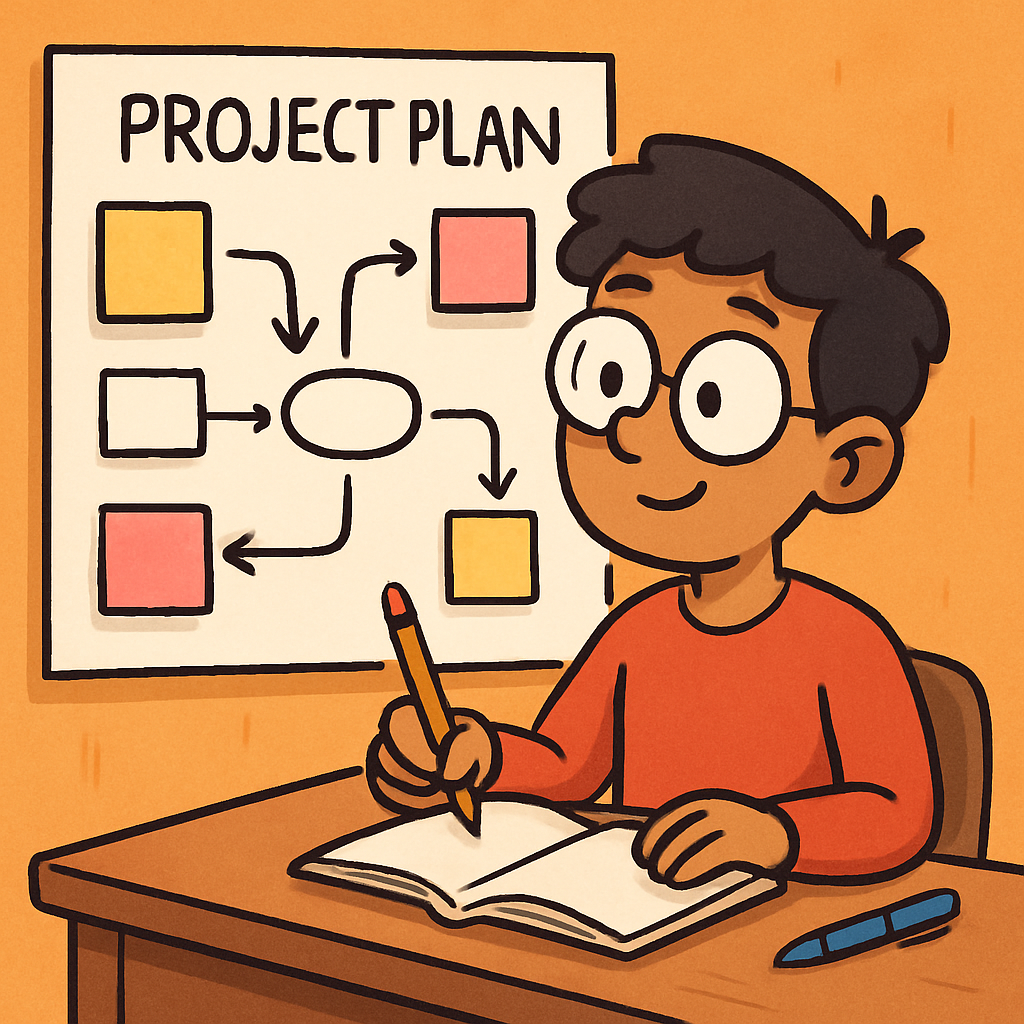 Welcome to this lesson on combining media elements. In this structured activity, you will systematically plan and develop a multimedia project that integrates various forms of media, including images, audio, video, and text. You will build upon the skills acquired from prior lessons, such as image manipulation in Canva, video editing in Clipchamp, and audio processing in AudioMass.
Welcome to this lesson on combining media elements. In this structured activity, you will systematically plan and develop a multimedia project that integrates various forms of media, including images, audio, video, and text. You will build upon the skills acquired from prior lessons, such as image manipulation in Canva, video editing in Clipchamp, and audio processing in AudioMass.
Upon completion of this lesson, you will have produced a concise multimedia piece, such as a brief video narrative or presentation, which incorporates at least two distinct media types. You will employ essential editing techniques, including trimming, fading, volume control, and basic layering, to enhance the engagement and professionalism of your work.
By the conclusion of this lesson, you will have the ability to:
Proceed through the lesson at a pace that suits you, and infuse your project with creativity. It is essential to utilise free resources or your own original media to adhere to copyright regulations.
 Before commencing the creation of your multimedia project, it is essential to dedicate time to careful planning. This process will assist you in organising your concepts effectively, ensuring that the final output is both coherent and engaging.
Before commencing the creation of your multimedia project, it is essential to dedicate time to careful planning. This process will assist you in organising your concepts effectively, ensuring that the final output is both coherent and engaging.
Begin by selecting a straightforward theme for your project, such as 'A Day in My Life', 'My Favourite Hobby', or 'A Short Story'. Remember, your project must incorporate at least two different types of media, for instance, images combined with audio, or video clips enhanced with text overlays.
Planning is a crucial foundation for any successful project, as it helps prevent errors and saves time during the creation phase.
 In this step, you will utilise Canva to create or edit images that will form an integral part of your multimedia project. These images may include backgrounds, photographs, or graphical elements that align with your chosen theme.
In this step, you will utilise Canva to create or edit images that will form an integral part of your multimedia project. These images may include backgrounds, photographs, or graphical elements that align with your chosen theme.
Ensure that the images you produce are relevant to your project plan and incorporate at least basic editing techniques to enhance their visual appeal and suitability.
Uploads > Upload Files > Select Image) or browse Canva's extensive library of free images. Once selected, apply editing techniques including cropping to remove unwanted sections (Select Image > Crop), adding text overlays for emphasis (Text > Add relevant Text), adjusting colours to match your theme (Select Image > Edit Colours in image tab), or applying filters to alter the mood or style (Select Image > Edit > Apply Filters & Effects). Experiment with these tools to refine your images.Share > Download > File Type > Download) . Select a suitable format such as PNG for images with transparency or JPG for standard photographs. Name your files clearly, for example, 'ProjectTitleSlide.png', to facilitate easy identification later. In this step, you will utilise AudioMass to create or edit audio elements that will integrate into your multimedia project. These elements may include background music, sound effects, or a voiceover narration, all tailored to support your chosen theme.
In this step, you will utilise AudioMass to create or edit audio elements that will integrate into your multimedia project. These elements may include background music, sound effects, or a voiceover narration, all tailored to support your chosen theme.
Ensure that the audio clips you produce are directly relevant to your project plan and incorporate at least basic editing methods to improve their overall impact and flow.
File> Load from Computer to import an existing audio file from your computer, or select File> New Recording to create a new voiceover. For instance, if your project involves narration, record a short script that describes your theme, such as explaining your favourite hobby. You may source free audio files from licensed websites like Pixabay music or Freesound, but always verify the usage rights to comply with copyright guidelines.Highlight selected audio by clicking and dragging your mouse across the area you want to cut > Right Click > Cut) . Add fade effects for smooth transitions by highlighting the start or end of the clip and applying 'Fade In' or 'Fade Out' (Highlight Selected Area > Effects > Fade in) . Adjust the volume levels using the amplitude controls to ensure balance, preventing any part from being too loud or too quiet (Highlight Selected Area > Right Click > Set Volume/Gain > Change Gain Percentage > Apply Gain). File > Export/ Download > Rename File > MP3 > 128kbps > Stereo > Export Whole File > Export. Download the file to your computer, naming it clearly, such as 'ProjectVoiceover.mp3', for easy reference in later steps. In this step, you will initiate your multimedia project using Clipchamp, an online video editing tool designed to integrate various media elements such as images, audio, video, and text. Clipchamp provides a straightforward interface that enables you to combine the components you have prepared in previous steps, forming the foundation for your final creation. This tool is particularly effective for layering media, allowing you to overlay elements to enhance the narrative flow of your project.
In this step, you will initiate your multimedia project using Clipchamp, an online video editing tool designed to integrate various media elements such as images, audio, video, and text. Clipchamp provides a straightforward interface that enables you to combine the components you have prepared in previous steps, forming the foundation for your final creation. This tool is particularly effective for layering media, allowing you to overlay elements to enhance the narrative flow of your project.
By starting your project in Clipchamp, you will establish a structured workspace where you can methodically assemble and refine your media according to the plan you developed earlier. Ensure that you refer back to your storyboard and notes to maintain alignment with your theme and objectives.